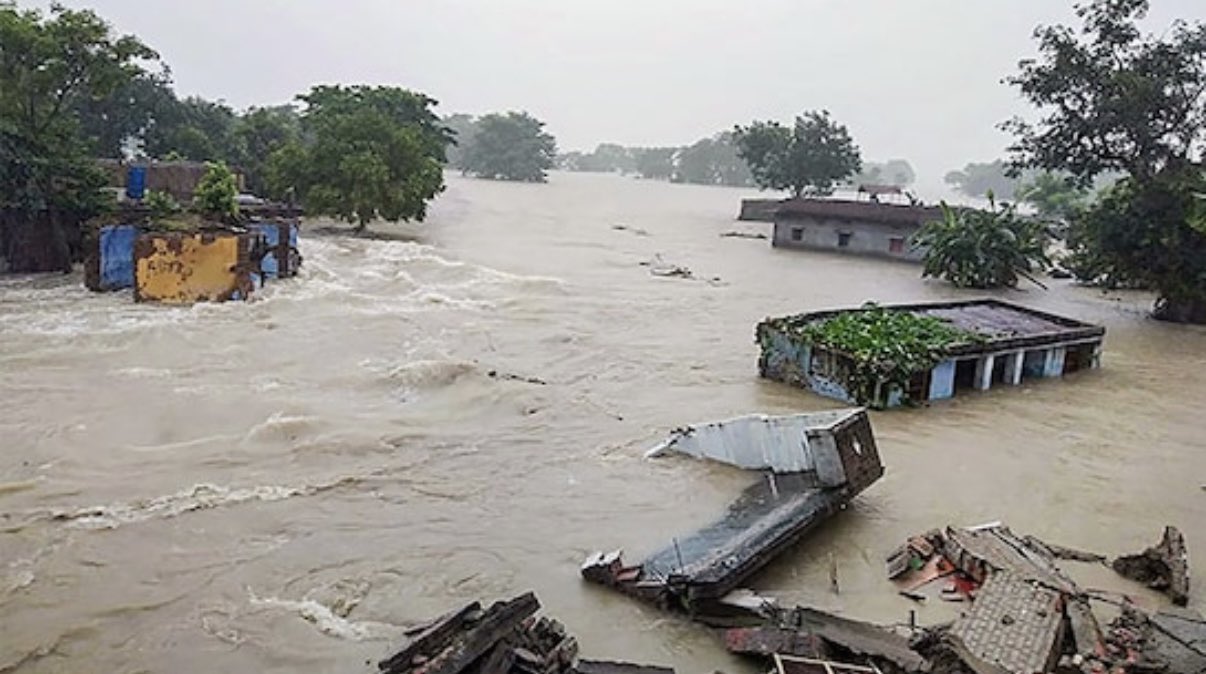Bihar floods: While the Punjab floods have rightly drawn national attention, tragedy in Bihar once again recorded with little recognition, and the cycle of silent suffering continues. Politicians, celebrities, and communities across Punjab came forward with unprecedented solidarity and support for Himachal and Punjab, which is all needed and fair on humanitarian grounds. But, Bihar’s annual devastation proceeds almost unnoticed, a pattern that requires urgent reflection and change.
Contrasting public response
Punjab’s crisis galvanised extraordinary action from its music and entertainment industries and local leaders. Star figures like Akshay Kumar, Harbhajan Singh, Sonu Sood, and Diljit Dosanjh contributed money, resources, and even boats, while social media overflowed with solidarity messages and fundraisers from Bollywood’s biggest names. Relief camps, community kitchens, and focused rescue missions ran in parallel, creating a visible force for mobilisation.
Bihar, meanwhile, struggles to see even a fraction of such attention. Despite being home to nearly one-fifth of India’s flood-affected population, annual devastation is treated as routine rather than a national emergency. The civic, political, and celebrity response in Bihar remains muted, often constrained to local officials and a handful of NGOs. No trending hashtags, no high-profile fundraisers, and little collective outrage mark their suffering.
Scale of the Bihar tragedy
The scale of the 2025 tragedy in Bihar is staggering. In just the last month, atleast 17 lakh people have been affected in 10 districts including Bhagalpur, Munger, Begusarai, Vaishali, Bhojpur, Khagaria, and Patna. Satellite imagery shows swollen rivers breaching embankments, with as much as 15-16% of district land underwater in locales like Patna and Bhagalpur.
Entire blocks, such as Kursela and Barari in Bhagalpur, report nearly five lakh residents living with floodwaters at their doorsteps. In Begusarai, more than 3.5 lakh people are displaced, while Patna district alone sees 1.5 lakh residents affected.
Annually, 28 out of 38 districts in Bihar experience floods, with 15 districts repeatedly among the worst hit, resulting in enormous loss of life, farmland, and infrastructure. The Ganga, Gandak, Kosi, Bagmati, and many tributaries consistently flow above the danger mark for weeks at a stretch. In Jawaniya village of Bhojpur, more than 50 homes were completely washed away by this year’s floodwaters, and schoolchildren in Khagaria rely on boats just to reach their classrooms.
In Bhagalpur, the Ganga swelled to 34.86 metres, well above its danger mark, flooding Tilka Manjhi Bhagalpur University and the city’s engineering college, but didn’t get the media attention like Delhi got when Yamuna overflowed.
Begusarai district’s Sadar block and several villages along the Ganga are under water, with displaced families now living on highways and in makeshift tents. In Patna, 15% of the district is flooded, causing severe waterlogging in urban neighbourhoods.
State government in August deployed disaster response forces, and embankment security patrols are underway 24/7 along 3,800 km of river embankments. Economic loss runs into thousands of crores each year, with recurring crop and property damage and hundreds of fatalities.
Why does Bihar go unnoticed?
Floods in Bihar are neither rare nor unpredictable, they arrive yearly, usually triggered by upstream rainfall and water release from Nepal, yet are met with a resigned silence.
Media coverage is sparse compared to similar events in northern and western India. National political figures seldom visit the state at these times, and national relief campaigns are scarce. The pain of floods is normalised, relegated to mere statistics rather than stories of real loss and hope.
Who will stand with Bihar?
This recurring pattern of invisibility begs the question: Who will stand up for Bihar? It is imperative for leaders, activists, and public figures, beyond state borders, to acknowledge the annual suffering and mobilise on the same scale as Punjab. Bihar needs, and deserves, a collective awakening, a groundswell of support and empathy from the wider Indian community, and robust efforts to both heal and mitigate ongoing disasters.
